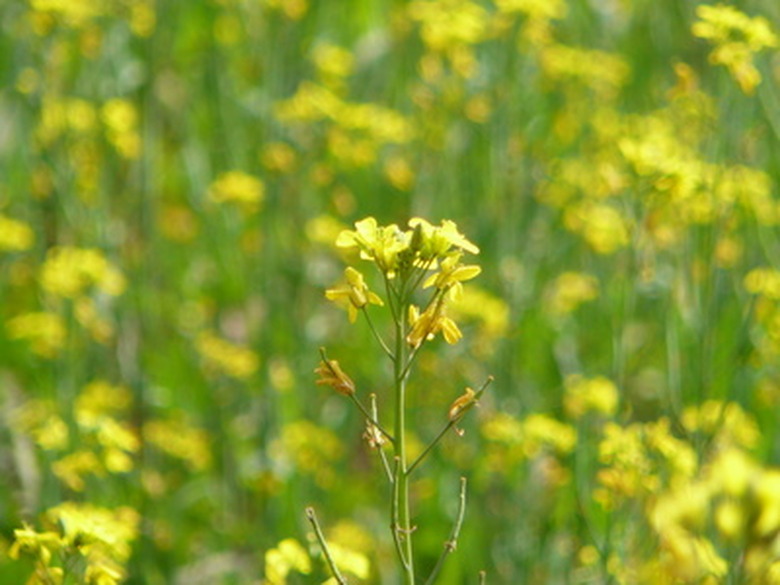How To Get Rid Of A Mustard Plant
Things Needed
- Water
- String trimmer
- Herbicide
As a tasty condiment, mustard enjoys a favorable reputation in culinary applications. However, some types of mustard plants, especially the garlic mustard plant, pose problems for many farmers and gardeners. This invasive herb multiplies through self-pollination and cross-pollination, creating numerous seeds each year. Mustard plants also produce chemicals that inhibit the healthy growth of desirable plant species. A combination of mechanical measures and chemical treatments eradicate these annoying plants.
Step 1
Pull out mustard plants in small gardens and lightly infested areas. Remove entire plants just before they start producing blossoms. Mustard plants usually produce flowers during May and June. Lightly water the soil near the mustard plants the evening before you plan to pull them out of the ground. Firmly grasp the mustard plants near the base of the stems and pull upward to avoid breakage. Use your foot and lightly tamp down the disturbed soil after pulling out these roots.
- As a tasty condiment, mustard enjoys a favorable reputation in culinary applications.
- However, some types of mustard plants, especially the garlic mustard plant, pose problems for many farmers and gardeners.
Step 2
Cut larger areas containing numerous mustard plants. Use an electric or gasoline-powered string trimmer to cut the stems very close to the surface of the soil. Avoid cutting these plants any taller than the surface of the soil to avoid recurrent growth from the remaining stubble and roots.
Step 3
Purchase a chemical herbicide to kill any remaining mustard plants. Select a solution containing 1 to 2 percent glyphosate. Apply this solution in the early spring or late fall when nearby plants display signs of dormancy. Follow the manufacturer's instructions when mixing and applying chemical herbicides to invasive weeds.
- Cut larger areas containing numerous mustard plants.
- Avoid cutting these plants any taller than the surface of the soil to avoid recurrent growth from the remaining stubble and roots.
Step 4
Examine and continue to monitor the growing site after removing the mustard plants. Check the soil every few weeks for signs of new mustard growth. The seeds of mustard plants lie dormant in the soil for many years. Avoid new infestations by quickly recognizing and pulling any new plants before they mature and spread.
Tip
Burn any stubborn areas of mustard infestation. This method also kills desirable plants, so use only as a last resort in weed removal. Consider renting a garden tractor with a brush cutter implement to cut large areas of thick infestation. Apply chemical herbicides on calm days to avoid overspray caused by windy conditions.
